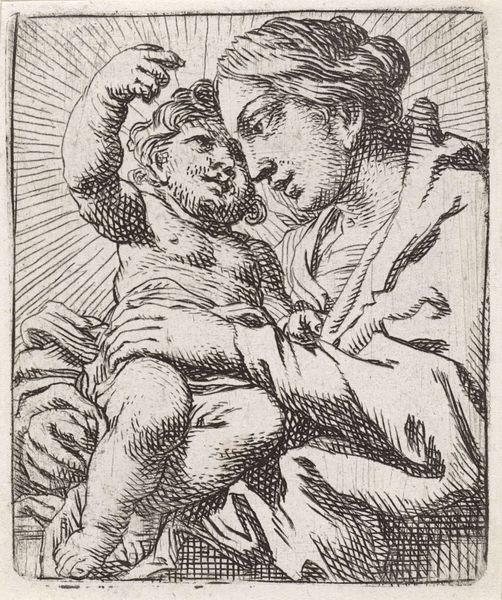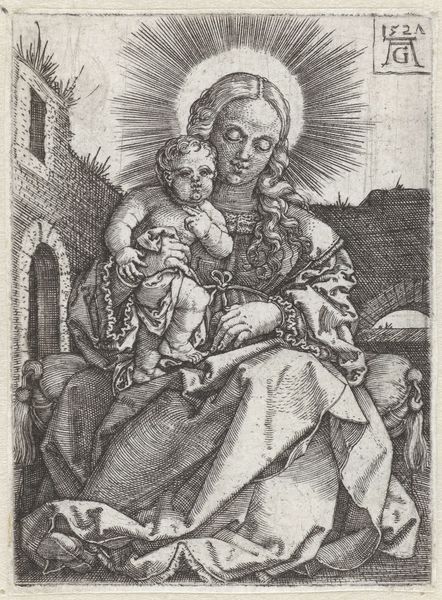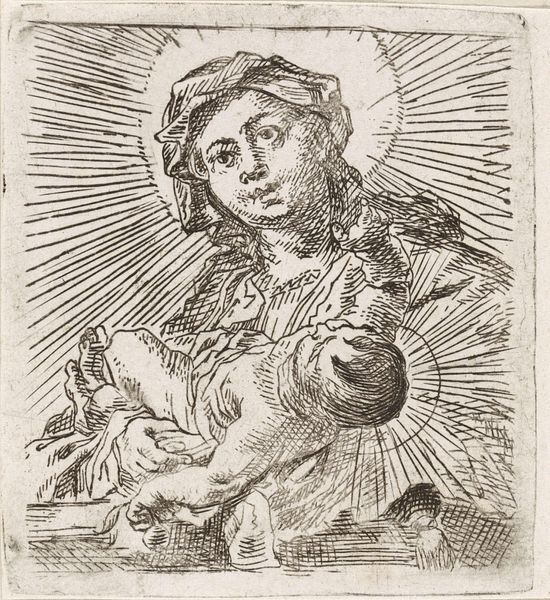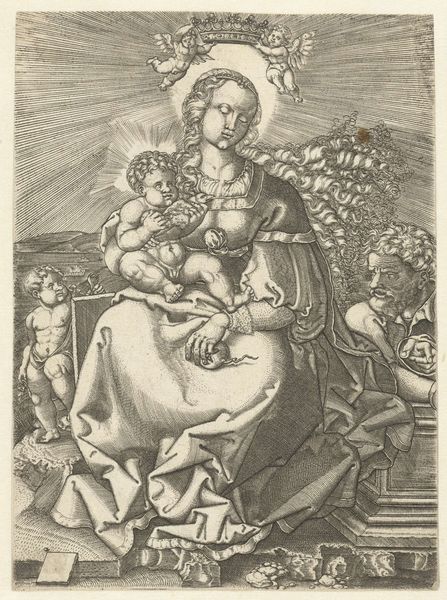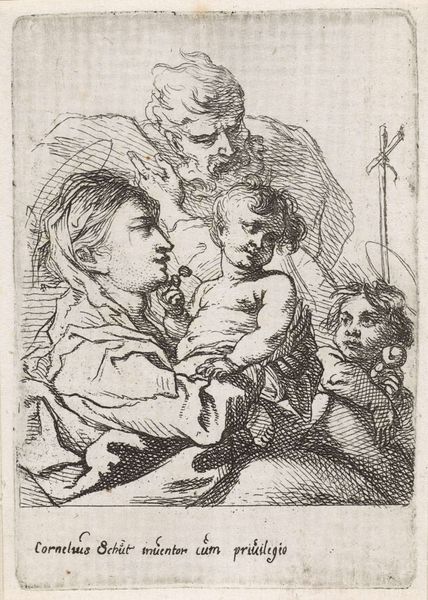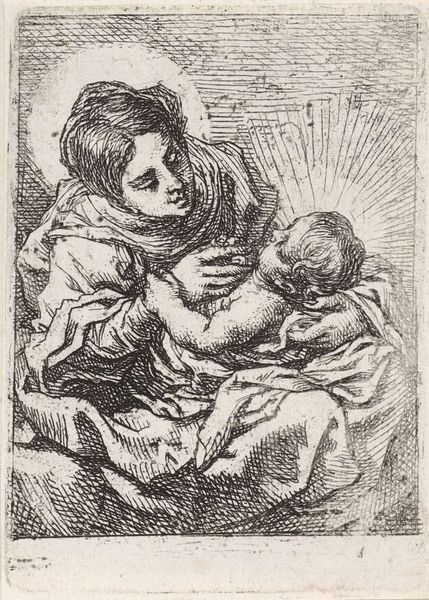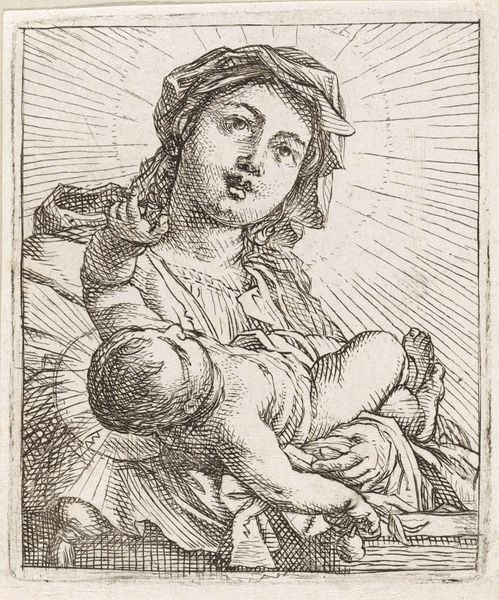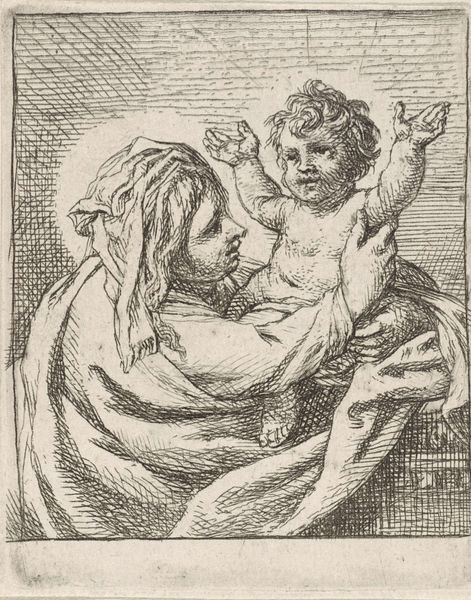
drawing, intaglio, paper, ink, engraving
#
portrait
#
drawing
#
ink drawing
#
pen drawing
#
intaglio
#
figuration
#
paper
#
11_renaissance
#
ink
#
line
#
northern-renaissance
#
engraving
Dimensions: height 50 mm, width 31 mm
Copyright: Rijks Museum: Open Domain
This small print of the Virgin and Child was made by Barthel Beham around 1520, using the technique of engraving. A design is etched into a metal plate with a tool called a burin, and then ink is applied to the recessed lines and transferred to paper. Look closely, and you can really see the hand of the artist, with a network of fine lines that define form and texture. The level of detail in such a small scale indicates Beham's skill and precision. Engraving was a key technology in the spread of information and imagery in the early 16th century. Its rise was closely linked to the development of printing and the growing market for reproducible images. Prints like this one weren't just about art, they were also commodities, reflecting the era's changing landscape of labor, consumption, and the increasing accessibility of art to wider audiences. Recognizing the print as a product of skilled labor, invites us to consider the broader social and economic context in which art is created and consumed.
Comments
No comments
Be the first to comment and join the conversation on the ultimate creative platform.
